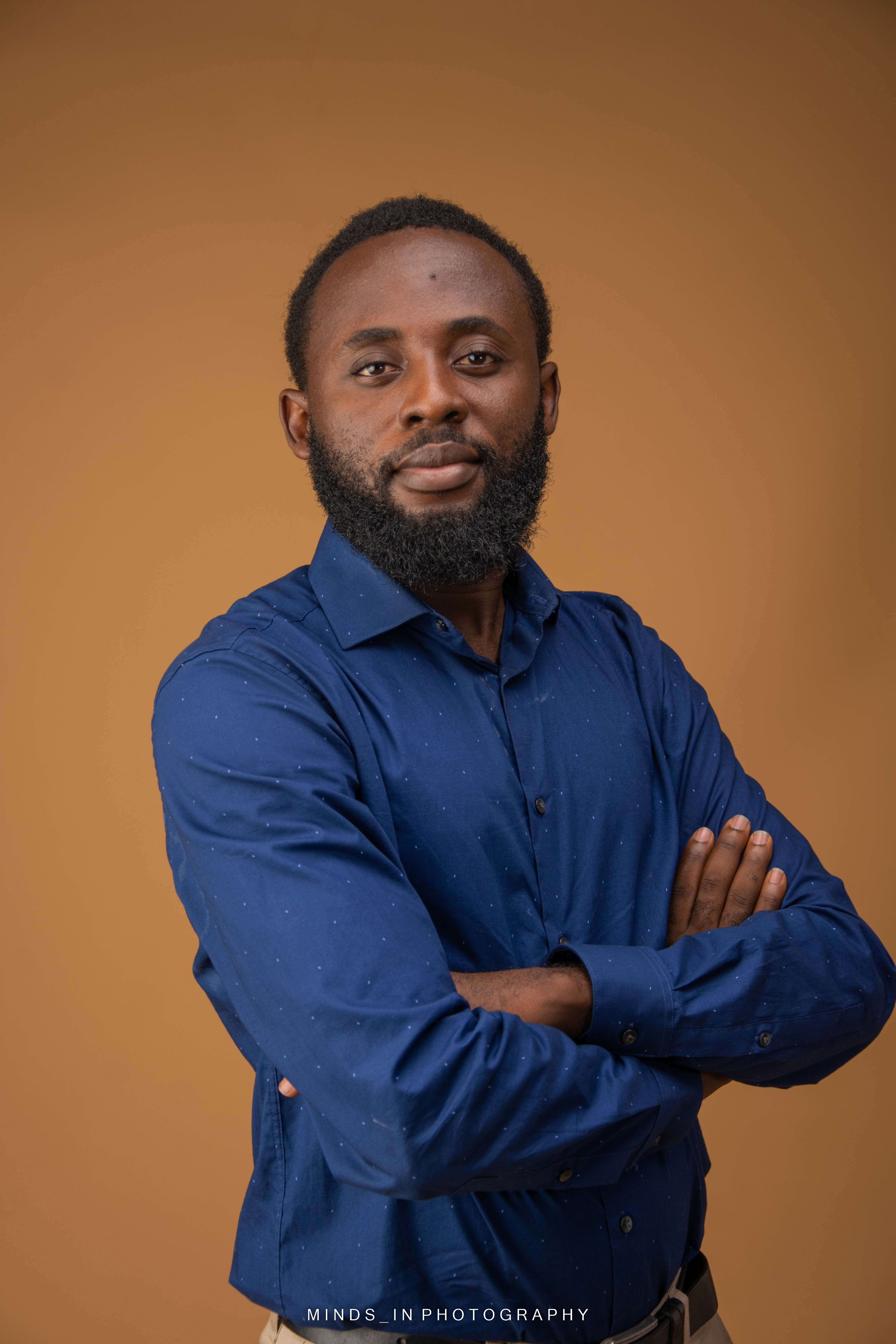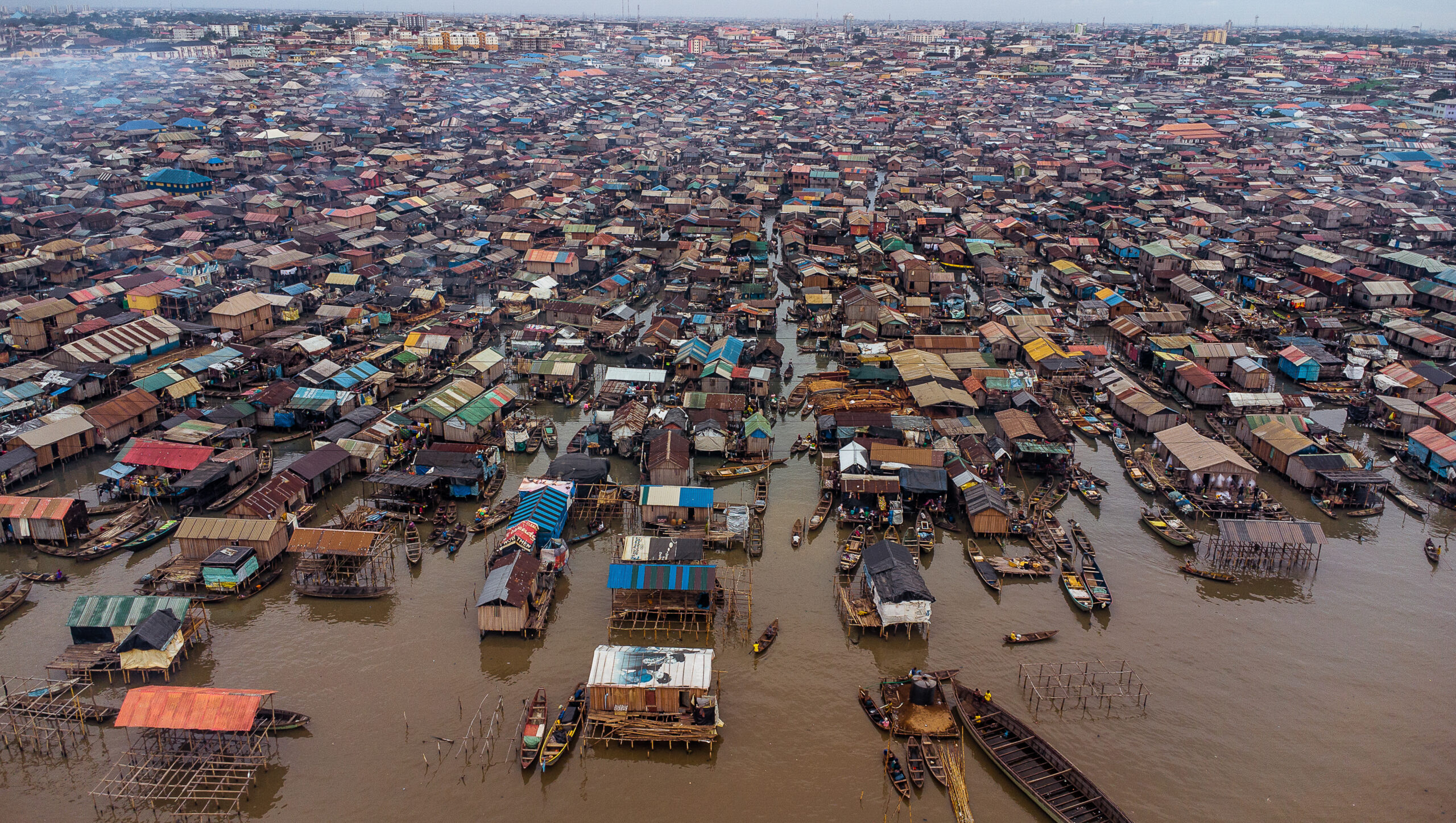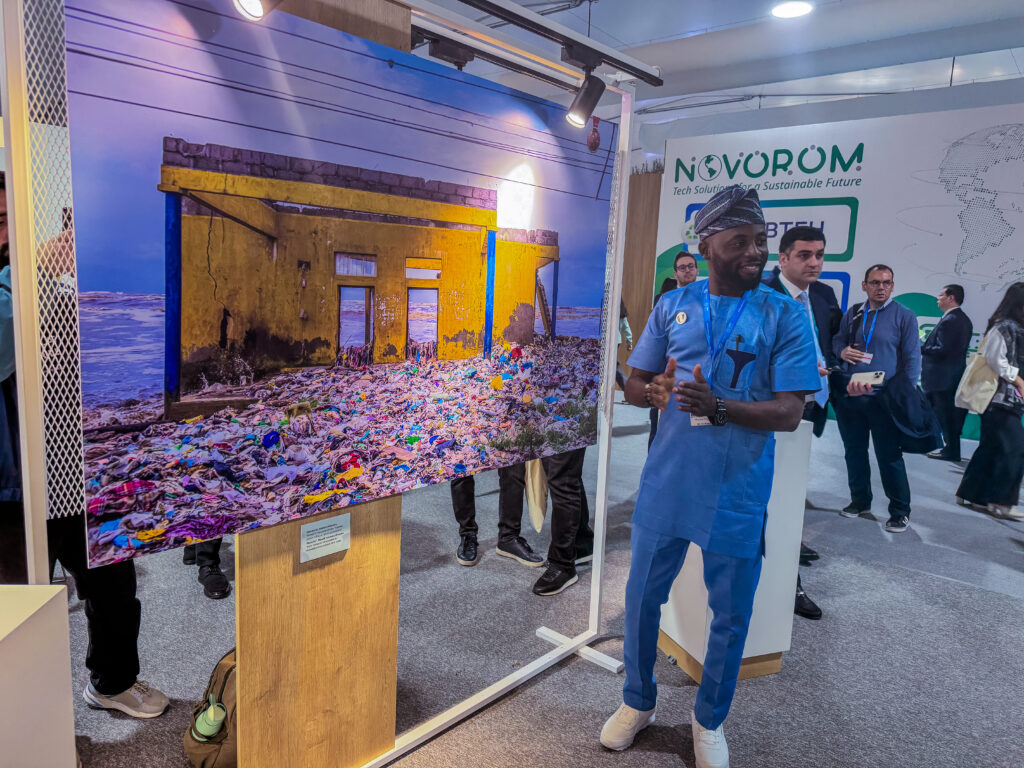“Mayowa is not a Nigerian environmental documentary photographer,” declares Olumide Idowu, co-founder of the International Climate Change Development Initiative and a senior colleague who has witnessed Mayowa’s ascent. “He is the Nigerian environmental photographer.” It’s a bold claim to make, but Olumide assures us that it’s the right one.
Mayowa Adebote’s trajectory has been remarkable, evolving from a passionate photography hobbyist during his secondary school years into one of Nigeria’s most critically recognised visual storytellers of the environmental crisis. In 2021, the 33-yr old crystallized this mission by launching Climagraphy, an initiative that functions as a gallery and advocacy initiative. Mayowa’s work, and that of Climagraphy is deeply concerned with the mechanics of compelling visual storytelling, specifically designed to document environmental degradation and, crucially, to advocate directly for the vulnerable communities caught in its crosshairs.
The power of this approach is validated by the prestigious platforms Mayowa’s work has featured in, including twice at the high-level climate conference of parties, at COP 28 in Dubai and COP 29 in Azerbaijan. He’s also featured at the Commonwealth People’s Forum in Kigali, the respected 11th Annual Pulitzer Photoville Festival in New York, and the globally recognized United Nations Photography4Humanity project, among others.
We connected with Mayowa shortly after the conclusion of his significant solo exhibition, ‘The Current.’ His deliberate choice of venue, Akodo-Ise Community, is a coastal village facing environmental pressures 76 miles from urban Lagos. Daola Oluteye, a senior fellow at the University College, London, says this is usual of the photographer; “He’s often trying to figure out what can be different, what can be better, and how he can actually connect with people,” Dola says.
In the following interview, Mayowa unpacks the mechanics of his growth, his strategic and ethical approach to environmental documentation, the creative process behind ‘The Current,’ and the broader landscape of environmental storytelling.

Q: Tell us a bit about your background and how your journey into photography first began?
Mayowa: It started in secondary school. I would borrow a friend’s father’s analog camera. I’d pay him to print the pictures, which I would then give out to classmates for the joy of sharing memories. During university, when digital cameras were beginning to trend, I photographed student union events and church programmes, printed the pictures, and gave them out for free. At the time, I never saw photography as a career path. It was simply something I enjoyed doing.
After my NYSC, I returned home with a new sense of purpose and persuaded my parents to let me buy a camera. That single decision marked the real beginning of my professional journey into photography.
Before specializing in environmental photography, what kind of work were you doing? How did those earlier experiences shape your current path?
I started with event photography. In fact, I vividly remember the first time I went to shoot at a university classmate’s wedding—Opeyemi. I was incredibly shy. It was the first time I was seeing some of my old classmates again, and considering how vocal and academically sound I was back in school, many had high expectations for me. I’m sure some thought I would have landed a high-paying job with a major construction firm or been climbing the corporate ladder. So, showing up with a camera at a time when photography wasn’t respected as a real profession made me feel deeply self-conscious. I couldn’t bring myself to take a single shot that day. I packed up the camera and left without clicking the shutter once.
I learnt to push through that block.
I started with weddings, small family gatherings, birthdays, church programmes, burials, and corporate events. Those events gave me the technical training I needed; how to manage light, anticipate moments, edit on the go, and navigate different social settings. For a brief time, I also explored portrait photography. I enjoyed capturing people in their essence, but I still felt there was more I wanted to express with my lens.
A major turning point came when I joined Thespian Family Theatre and Productions. I was initially brought in as a photographer and editor, but over time, I was trusted with more responsibilities and eventually became the Head of Media. That experience was critical for me. It gave me broader exposure to storytelling beyond still images—how theatre, production, sound, visuals, and creative direction work together to convey powerful narratives.
All these experiences laid the groundwork for my transition into environmental and documentary photography. They taught me to listen deeply and to frame stories in a way that connects emotionally and intellectually. So when I began documenting climate impacts and development issues, I could understand people and realities and consequences.

Mayowa (right), poses with a colleague Joshua Ogoh in 2017
What sparked your specific interest in climate and environmental issues?
Growing up in a modest home, I didn’t know the words “climate change” or “environmental degradation,” but my mother instilled in all of us a sense of cleanliness and respect for our surroundings.
Then, shortly after leaving my former place of work to start my own business, I was invited to document the Youth Climate Innovation Hub, a UNDP-sponsored project, and it was the first time I heard the phrase “climate change.” I went online that evening and saw mostly images of glaciers, melting ice sheets, and solitary polar bears. It struck me then how disconnected those distant visuals felt from the realities of my own communities in Nigeria. There were no local, indigenous narratives.
I like to think that was when my two worlds collided. The childhood lessons of caring for and understanding my environment along with this understanding that this was a global problem.
How do you define climate and environmental photography? What distinguishes it from other forms of photojournalism or nature photography in your view?
To me, climate and environmental photography is a powerful form of visual storytelling that captures this complex relationship between people, their environment, and how that environment is changing. Unlike other forms of photography that often emphasize beauty, glamour, or aesthetics, my work is grounded in truth.
My photography focuses on impact, resilience, vulnerability, and sometimes injustice. It exists less as a means of decoration and more to document, to confront, to educate.
It often takes a deeper level of understanding for people to appreciate the value of this kind of work because the beauty in it is not always visual. You need context and to understand the story in and behind the image.
Climate and environmental photography asks tougher questions: What is happening to this environment? Who is affected? What are the consequences if nothing changes?
My work leans heavily into photojournalism. I’m telling the story of that place, especially how human activity, policy failure, or environmental neglect has shaped it. Whether it’s flooding in a coastal community, a dumpsite in a residential area, or a young innovator repurposing waste into wearable art.

Can you describe your process? How do you identify the stories you want to tell, research them, and gain access?
My process begins with curiosity and a strong sense of purpose. I especially love stories that are about people and the environment, and not just the environment alone.
My first visit is never about taking pictures. I go in to listen, learn, and build trust. I familiarise myself with the environment, meet the people, and try to understand the challenges they face. Sometimes I meet with the community head or elders, depending on how long I plan to spend telling the story. These early engagements are crucial, not just for access but for respectful storytelling. I always prioritize transparency and consent, making sure people understand why I’m there and how their stories will be used.
Only after these steps do I bring out the camera. By then, the story becomes a collaboration between me and the people living it. And that, for me, is what distinguishes this kind of work.
Photographing environmental issues often involves sensitive situations and communities. What ethical considerations do you think photographers should consider in their work to ensure respectful and impactful storytelling?
Consent and respect are non-negotiable. It’s easy to forget that these are real people living through real struggles and not just subjects in a frame. I always try to seek permission. You have to take time to engage, ask questions, and learn about the culture, history, and daily experiences of the people affected. This depth brings clarity and compassion to your work, and helps avoid misrepresentation.
Images can speak volumes, but they can also mislead if taken out of context. I’m intentional about avoiding exaggeration or staging scenes. My goal is to ensure that what I capture reflects the true reality of the situation.
What led you to found Climagraphy?
Climagraphy was born out of a deep personal realization that climate conversations lacked visual representation of African local contexts. After being introduced to the concept of climate change in 2019 during the UNDP Project i mentioned earlier, I went online to learn more. What I found were countless images of polar bears, glaciers, and melting ice caps; powerful visuals, no doubt, but completely disconnected from the realities I know in Nigeria. I kept asking myself where were the African faces, the flooded communities in Lagos, the farmers battling erratic rainfall in rural Nigeria? Where were our stories?
That gap is what led me to establish Climagraphy, which is a simple portmanteau of the words climate and photography.
Purpose is something that changes a lot but at the core Climagraphy aims to document environmental realities and make them accessible and relatable to people who may not speak the language of science or policy.
How do you see your photography and Climagraphy contributing to climate action, policy change, or public awareness in Nigeria and beyond?
I see my photography and Climagraphy as a visual bridge between the lived realities of people and the decision-making tables.
At Climagraphy, we are intentional about ensuring our work doesn’t end on gallery walls or just social media. We strategically position our stories in front of policymakers, NGOs, researchers, the media, and more importantly the affected, with the goal of sparking action. Our projects have supported research, influenced environmental justice cases, and even contributed to the shutdown of harmful operations, like in the Black Oxygen project.
Mayowa at the photo exhibition of the COP 29 Climate Action in Focus Competition, where he was announced second runner up.

